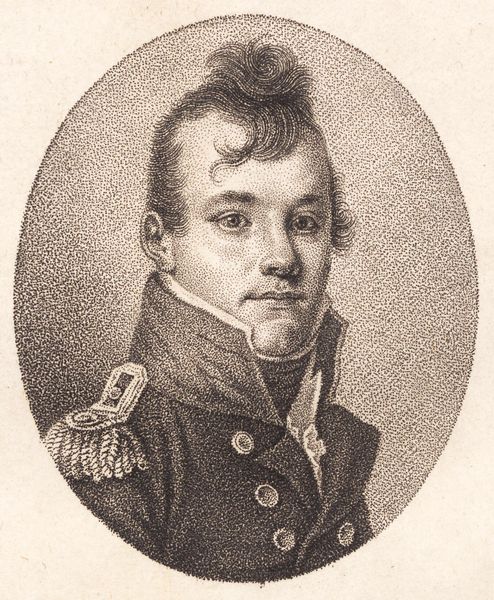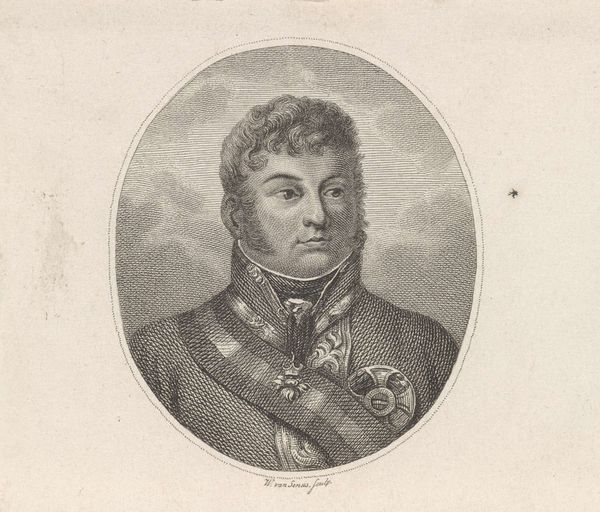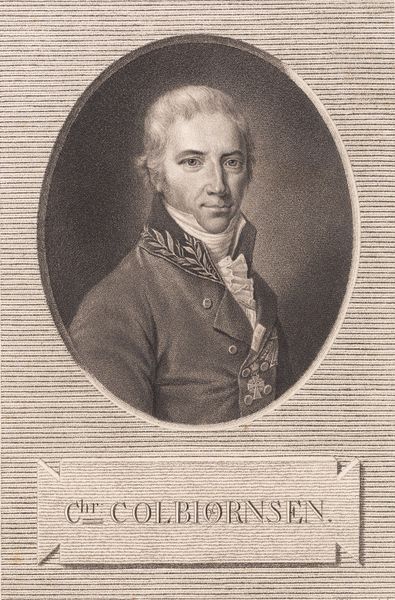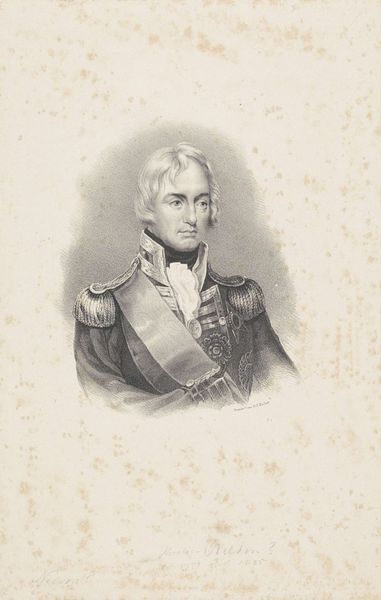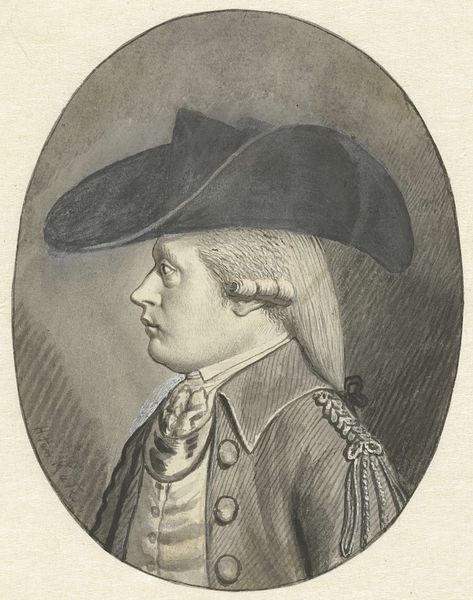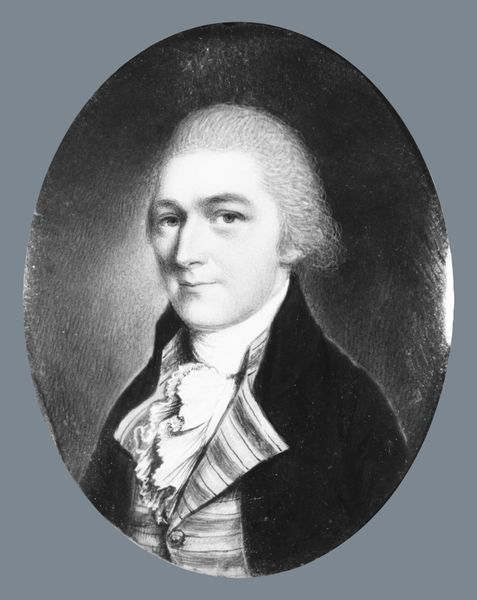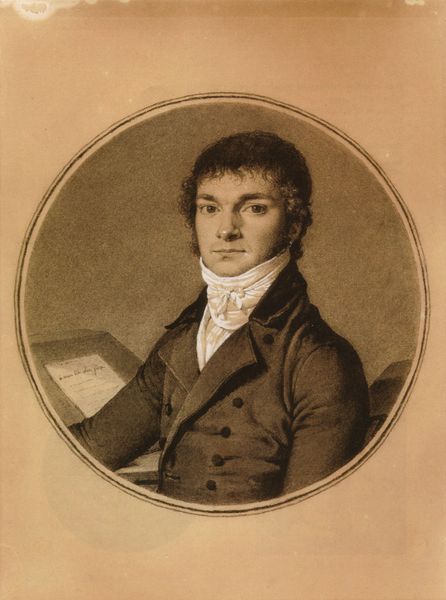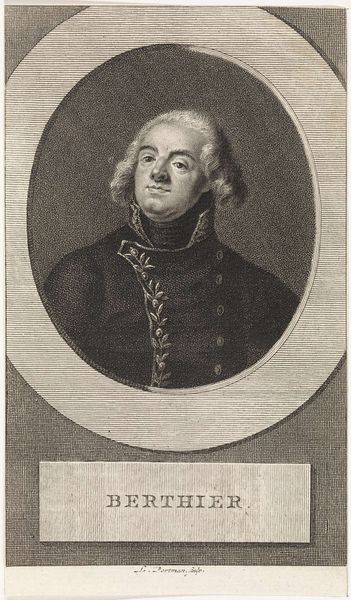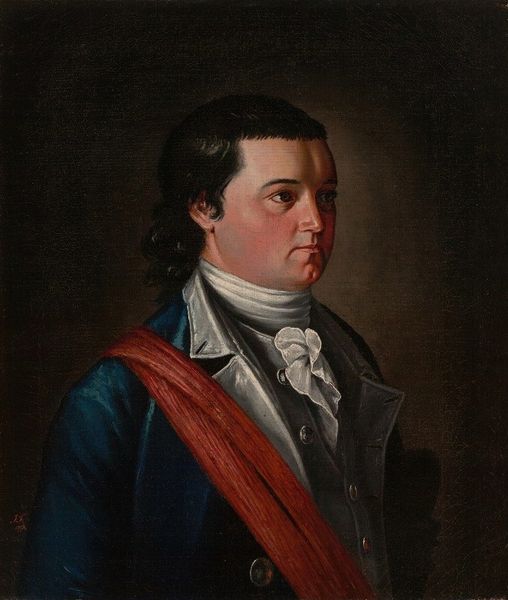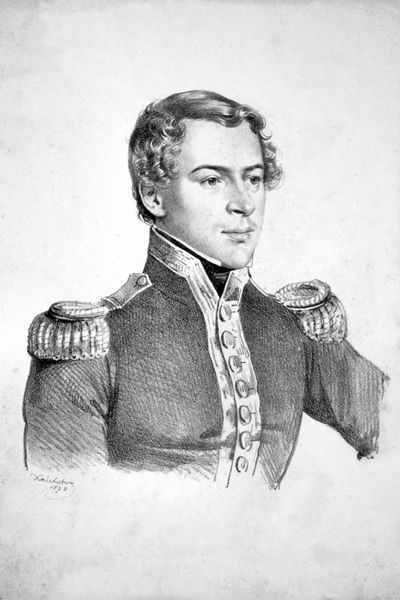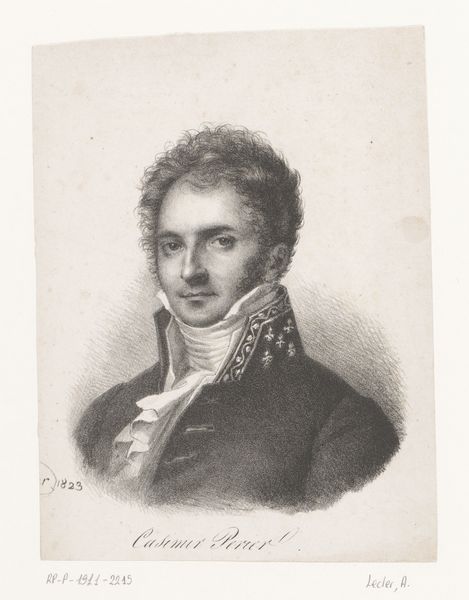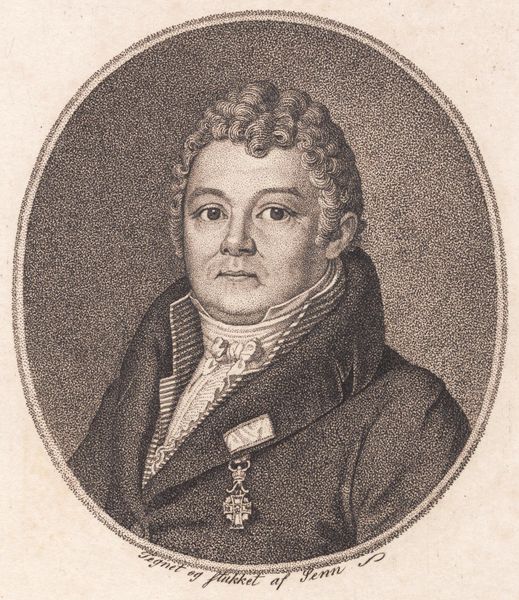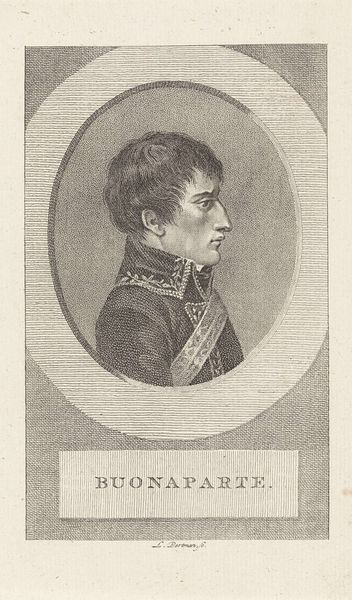
print, engraving
#
portrait
#
neoclacissism
# print
#
portrait drawing
#
history-painting
#
engraving
Dimensions: 136 mm (height) x 110 mm (width) (bladmaal), 132 mm (height) x 105 mm (width) (plademaal), 72 mm (height) x 60 mm (width) (billedmaal)
Editor: This is J.F. Clemens's "Lieutenant O.C. Lange," created sometime between 1748 and 1831. It's an engraving, and it's quite striking, isn't it? The subject seems very... present, despite the distance of time. What jumps out at you when you look at this portrait? Curator: What I find particularly compelling about this portrait is how it participates in the construction of a public image, particularly around military authority during the period of Neoclassicism. Notice the crisp lines, the clear depiction of the Lieutenant's uniform, and the relatively unemotional expression. It speaks to the values a burgeoning Danish state wanted to project: order, control, and dutiful service. Editor: So it's not just about capturing a likeness, but about conveying a message? Curator: Precisely. Portraiture of this kind often functioned as a form of propaganda. Think about the context: Denmark was navigating complex political alliances and wars during this period. A strong, well-represented military figure like Lieutenant Lange reinforced the idea of national strength and stability. Even the choice of engraving as a medium, allowing for reproducibility, served to amplify this message. Editor: It's interesting how the technique itself contributes to the message. Did the identity of Clemens, the artist, play a role? Curator: Absolutely. Clemens was a known and respected engraver. By commissioning him, the portrayal of Lange gained further authority, lending credibility and prestige to both the subject and the message being conveyed. How do you think knowing this context changes how we view this work? Editor: I guess it's less about the individual and more about the institution he represents. I was so focused on the Lieutenant’s expression before! Curator: And that's perfectly valid. However, by understanding the social and political forces at play, we can appreciate how art actively participates in shaping public perception and reinforcing societal values. Editor: I see, thank you. I definitely have a lot to think about now when considering portraiture!
Comments
No comments
Be the first to comment and join the conversation on the ultimate creative platform.
